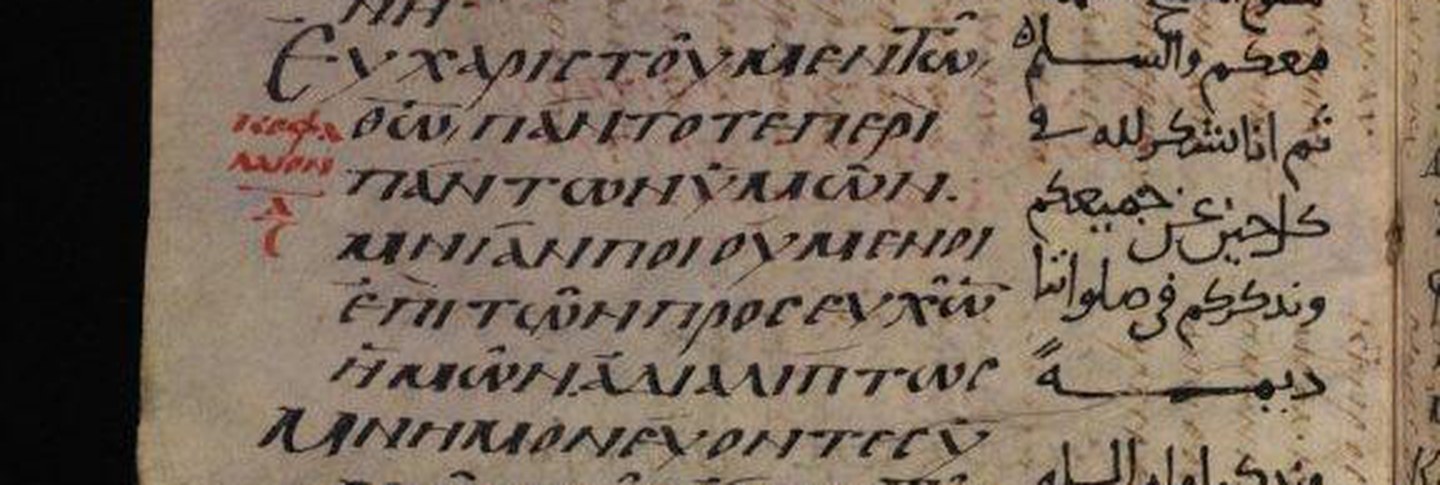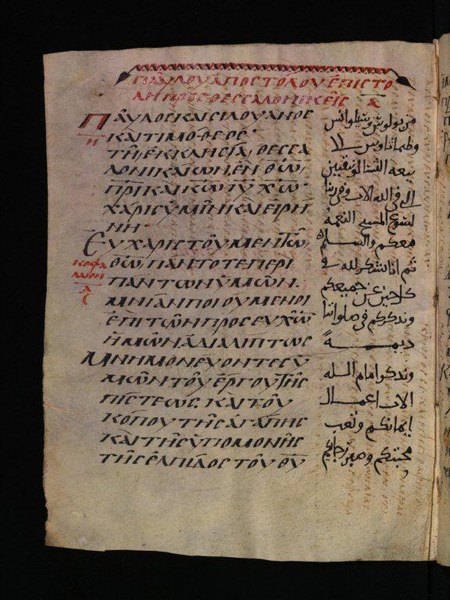On November 16 Father Justin Sinaites and Professor Jack Tannous gave an informal talk at Dumbarton Oaks. They spoke to a capacity crowd in the Founders’ Room, and were still fielding questions two and a half hours after the talk began. Father Justin has been hailed by the Los Angeles Times and the National Geographic as "the icon of the icons" and "a rock-star monk"; he is a very familiar figure in the American and European Byzantine community because of his frequent visits as courier to major exhibitions, but also because of his learned and helpful hospitality at the monastery of St. Catherine’s, where he is librarian. He was brought up in El Paso, educated at the University of Texas at Austin, and entered the monastery of the holy Transfiguration at Brookline before entering St. Catherine’s in 1996. He is now deeply involved in a five-year project, the Sinai Palimpsest Project, to bring multi-spectral imaging to bear on 125 palimpsest manuscripts. Jack Tannous, another Texan, was brought up in Houston, was also educated at Austin, Texas, then completed his MPhil in Eastern Christian Studies at Oxford, and moved to History at Princeton to work on his PhD under Peter Brown. He held the Dumbarton Oaks Teaching Fellowship in Byzantine History at George Washington University, creating with Scott Johnson the DO Syriac Resources web page, before moving back to succeed Peter Brown at Princeton. Their paper concerned a manuscript from the New Finds (discovered in 1975) at Sinai, a ninth-century bilingual Greek-Arabic Lectionary, written in uncials over an erased lower layer, which has only recently been made legible. This includes an as yet unidentified text concerning John Chrysostom, thePandects of Antiochos, and text from prophetic books including Jeremiah. Father Justin began by discussing the Greek text of the epistles, which contains non-standard Byzantine readings. Jack Tannous then spoke about the Arabic New Testament and the social context for bilingual copying in the early centuries of Islam, establishing that the Arabic version of the epistles was translated from Syriac rather than from Greek. Finally, Father Justin showed what can now be seen of the under-layer, and identified the texts concerned. Some members of the audience working on Chrysostom were directly affected by the discovery; Syriac and Arabic scholars found another piece in the story of the languages of the eastern Mediterranean; everyone, including undergraduates from Georgetown, realized how privileged we were to share in this spectacular scholarly advance.
An informal talk with Father Justin Sinaites and Professor Jack Tannous

